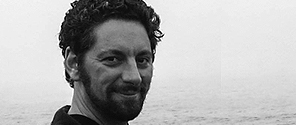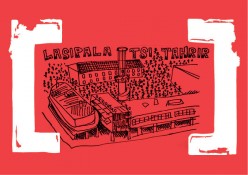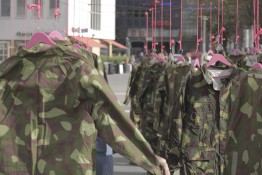Michel Bauwens
Contributions:
For TO THE SQUARE 2 :
“THESIS ON P2P POLITICS”, “The Square” Issue #1, p. 5/26
A Conversation between Michel Bauwens and Ivor Stodolsky, April 2014
Michel Bauwens is a leading proponent of the emerging field of “peer-to-peer” (P2P) practices and theory, and the director and founder of the P2P Foundation, a global organization of researchers developing new models of peer production, governance and property.
Following his leadership of the FLOK project for the government of Ecuador in 2014, he is a key figure in the Commons Transitions Plan.
http://p2pfoundation.net/Commons_Transition_Plan
Video Release: #TSQ2 Docu-Teaser
Watch Jophi Cragg de Mark’s docu-clip based on materials from TO THE SQUARE 2 aka #TSQ2:
Watch this space for an upcoming full-length documentary based on #TSQ2 (https://www.re-aligned.net/square-2/) and its artists and contributors by the Swedish-Uruguayan artist Juan-Pedro Fabra Guemberena.
Respect to Jophi, who volunteered to make this self-organised contribution which catches the speed and spirit of the almost two weeks we spent on Lasipalatsi Square with TSQ2 in August 2014.
(We are glad to welcome volunteers and interns at Perpetuum Mobile – but only on condition that we can make sure they are not unpaid 😉 )
#TSQ2 #perpetuum Checkpoint Helsinki Helsingin juhlaviikot / Helsinki Festival
CURATORS: Ivor Stodolsky and Marita Muukkonen
TSQ2 ARTISTS: Ammar Abo Bakr (Luxor/Cairo); Núria Güell (Barcelona), Khaled Jarrar (Ramallah); Vladan Jeremic & Rena Rädle (Belgrade); Nikolay Oleynikov (Nizhny Novgorod/Moscow); Raumlaborberlin (Berlin); Art group ZIP группировка ЗИП (Krasnodar). Opening concert with Ramy Essam and Paleface Official (soundtrack of the the clip)!
THE SQUARE newspaper: edited by Ivor Stodolsky; design by Tzortzis Rallis (The Occupied Times of London); art by Ganzeer / Mo Fa, Federico Geller, Vladan Jeremic & Rena Rädle and articles by Michel Bauwens, @Feminist Pencil (Nika Dubrovsky), Grey Violet (aka Maria Shtern), Núria Güell G.U.L.F., Occupy Museums (Noah Fischer), Teivo Teivainen, Telekommunisten Baruch Gottlieb, Dmytri Kleiner) and Nadya Tolokonnikova of Zona Prava / PussyRiot.
Screenings included: ART WAR, Pussy Vs Putin and Indignez Vous! by Tony Gatlif . Credit to مُصِرّين (Mosireen) for material from the Egyptian Revolution.
Thanks also to the participants of Nikolay Oleynikov’s Radio Pravda project including Oxana Timofeeva, Jonathan Brooks Plat, Grey Violet, Lilu S. Deil (one of the many from the Школа Вовлеченного Искусства Что Делать – School of Engaged Art, Chto Delat), Ilya Yakovenko, Kirill Medvedev, Roman Osminkin Роман Осьминкин , Ivor Stodolsky with Geno Lechner, Paleface, Olga Jitlina and Jon Irigoyen, Misha Griboedov, Mokhnataya Podnoga (Shaggy Leg-up), Antti Rautiainen, Technopoesia, Kievskie Podmyshki (Kiev Armpits), Marina Maraeva, Arkadiy Kots Band, Artur Aristokisyan and many others.
A Ciclista Del Grano production.
Noah Fischer
Works:
Article “A Global Debt Museum” by Noah Fischer / Occupy Museums
Art by G.U.L.F.
both in THE SQUARE newspaper Issue #1, published as part of To The Square 2.
Noah Fischer is a New Yor k based artist and cultural activist. He is a member of Occupy Museums and Gulf Labor. Initially Fischer’s practice encompassed kinetic installations (Rhetoric Machine, New York, Oliver Kamm Gallery, 2006, Pop Ark, Kunstenfestivaldesart and Steirischer Herbst 2007) exp
k based artist and cultural activist. He is a member of Occupy Museums and Gulf Labor. Initially Fischer’s practice encompassed kinetic installations (Rhetoric Machine, New York, Oliver Kamm Gallery, 2006, Pop Ark, Kunstenfestivaldesart and Steirischer Herbst 2007) exp
erimental theater (collaborations with andcompany&co), and object making (Monitor, Clare Oliver Gallery, 2008). Following the financial crash, Fischer exited from the private art market, initiating an inquiry into mechanisms of inequality through performance in public space (Summer of Change, 2011). This practice collided with the Occupy Wall Street Movement where he performed in the park as a giant talking coin, and then became involved in direct action organizing, initiating Occupy Museums with a manifesto on October 19th, 2011. Fischer has played a central role in planning actions and experiments at MoMA, Frieze, Guggenheim, 7th Berlin Biennale, KM, and CCA Warsaw, uncovering a network of allies internationally. He is currently working on a platform concerned with debt in the arts along with artist Coco Fusco, and maintains a studio practice in Brooklyn. Most recently they co-organised the international conference, “The Artist as Debtor” https://www.facebook.com/groups/1456508724571514/?fref=ts
Recent Exhibitions and Actions
2015 (upcoming) Gulf Labor in 56th Venice Biennale
2014 Work it Out, group exhibition at Momenta Art, NY
2014 Action Series: Guggenheim Museum, Who is Building the Guggeneheim Abu Dhabi? (Global Ultra Luxury Faction). New York, NY.
2014 Action: Metropolitan Museum of Art, Ritual Rebranding of David Koch Plaza. NY, NY.
2013 Global Activism, curated by Peter Weibel, Linnea Semmerling, Joulia Strauss. ZKM Museum, Karlsrue, Germany.
2013 Winter Holiday Camp (accepted into Museum’s permanent collection 12/13), Center for Contemporary Art, Warsaw, Poland
2013 Queen Mother of Reality: BiBA Performa, collaboration with Pawel Althamer, Performa 13, New York.
A STATE OF PRE-
21st Century Re-Alignments in Art and Politics
An anthology of art and theory
from the Re-Aligned Project
“A State of Pre-” is a pluridisciplinary investigation into the conditions, subjectivities and agencies provoking a realignment of art, thought and politics in the 21st century. Drawing on its diverse participants while inviting new contributors this anthology gathers together essays, theory and art related to the past three years of the Re-Aligned Project.
As a thematic umbrella-project dedicated to art and political movements advocating change, resistance, rebellion or revolution in their respective societies, the Re-Aligned Project has been defined by an ongoing series of workshops, exhibitions, artist-in-residencies, seminars, conferences, street and public art festivals. An interactive map of the project is found at www.Re-Aligned.net, which documents three years of engagement across Europe, Russia, the Middle East and Northern Africa.
Future historians will judge whether the wave of revolts of our time bear comparison to 1640, 1789, 1848, 1968, or perhaps, following further major convulsions, will be seen as the capitalist antipode to the communist collapse of 1989. What is clear today, is that we live in a time of worldwide instability, where hegemonic government by consent is under intense pressures due to the crises of transnational elites above, and the discontent of vast majorities below, which are forced to bear the brunt of the ensuing problems.
Next to the economic and ecological crises of mondial scale, there are political conflicts being played out in widely differing arenas which show remarkable structural similarities. The notion of a non-aligned positionality, which invokes the refusal of multiple mainstream positions, describes one such common structural feature. An Egyptian, Russian, Chinese or Cuban oppositional intellectual, for example, will reject (local) authoritarianism while often simultaneously maintaining a highly critical stance vis-a-vis (global) western forms of historical and/or current expansion and oppression. A European or US Occupy activist, as much as an African or Latin American intellectual, will similarly reject an authoritarian conception of communism while fighting the rapacious logic of neoliberal capitalism. In all cases, concomitant with a clear non-alignment with the outmoded mainstream social paradigms of the 20th century, we see what we call re-alignments. Although a term kept deliberately open to multiple readings, re-aligned initially describes a re-engagement with and re-merging of activist and intellectual currents that are replacing the apathy and disillusionment, apolitical irony, particularism, single-issue and identity politics of the previous epoch. It describes the “third”, “fourth” or “fifth” ways being sought between vertical and horizontal forms of organization, between particularist identities and unarticulated hybridities, between difference and universalism, and so on.
The period preceding our current era, sometimes called postmodernity, saw a sustained focus on cultural-ethnic issues, post-colonial and national-independence narratives, post-communist nation-building and religious revivals, gender related liberation movements and also numerous new ways of reading popular and commercial culture and society. While subverting and superimposing and making these configurations clash, many power relations which postmodernist theory and art engaged with and critiqued, however, were often paradoxically strengthened and reproduced in this same period, rather than overcome.
Explanations for this require a re-orientation of perspectives. It has been argued that precisely postmodernism’s aversion to “meta-narratives”, the “universal”, “reality” and similar overarching conceptions, furnished the atomizing “conditions of ignorance”, so to speak, for the macroeconomic neoliberal depredations of the past decades. Discussion of general social and political structural movements remained out of fashion, suspect, even unspeakable, in an environment where collective convictions and ideals were ridiculed as simplistic, dangerous and antiquated, often forced to be couched in obscure jargon, while the power-relations they decried took their heavy toll.
Over the past years, the clarity of the need for common agency has led us to speak of the re-aligned approach as engaged in multilectic thinking. Careful to avoid reversions to single-issue, single-culture, single-tradition thinking, that is, abandoning diversity or falling into undifferentiated universalism, this likewise multivalent term describes the aim, amidst the maddening multiplicity of our times, to redevelop models for holistic worldviews. The plethora of currents and movements which constitute re-alignments we speak of, are a type of globalisation ‘from below’. Due to their undeveloped, still-localised nature, we hence describe them as having a pre-mondial agency. This is an agency for which politics, art and thought are only now beginning to imagine structures for and give a language to.
Following the near-collapse of global markets in 2007-8, multiple waves of resistance and rebellion against diverse forms of oppression, enslavement and injustice have washed the world. From dramatic battles for basic freedoms and human rights, to forceful anti-corruption movements, to rising rejection of corporate and state control and disenfranchisement, to angry demands for advanced forms of equality and justice, not dissimilar grievances and claims have been brought to “the square” in a wide range of societies. Although nothing is certain, the chances are these grievances, and bold proposals for solutions to them, will again cross critical thresholds with the amplitude of ongoing ecological, financial, social and cultural crises.
In short, we wish to investigate the horizon which lies before us. We are in a state of “pre-”. Contrary to the fin de siècle pessimism of what may be called the non-aligned generation of the “post-”, re-aligned movements are part of a quest for a wider mondial commons. Going beyond the ubiquitous “post-” of the outgoing epoch (post-war, post-modern, post-Soviet, post-communist, post-ideological, post-history, post-colonial, post-human, etc.) what may be called a re-aligned generation of the “pre-” – naturally defined not by age but vision – seeks the proliferation of common orientations, desirables and initiatives in face of mondial crises. The Re-Aligned Project has set its focus on these currents of antecedent, not to say antediluvian predicament.
Peer Production, P2P
Attribution-ConditionalNonCommercial-
ShareAlikeLicense.
Jeremic & Rädle: Non-Googleheim

For TO THE SQUARE 2
Drawings on banners and leaflets on Lasipalatsi Square.
Googleheim is a museum that collects artistic practices which have emerged during popular revolutionary waves and protests over the last decade. The collections show stuff artists and activists have disseminated through online social networks as acts of resistance against, and provocations directed at various political regimes.
The museum acquires its collection from companies that trade in statistics and information collected from online social networks. Information packages are on offer for any taste and use, yet are mainly designed for political purposes and marketing campaigns. For example, an election candidate can acquire localized information packages in order to enrich and elaborate a political speech or election campaign – so as best to respond to the most popular issues being discussed on social networks in that particular area. The Googleheim Museum selects the most thrilling and “dangerous” data packages for display.
In the world of the Googleheim Museum, exposed in galleries publicly visible from all over the world, previously politically-relevant acts and demands lose their politicality… There is no easier way to absorb critical and antagonistic practices.
What are the counter-strategies that open up ways to avoid the totalizing enormity of the digital archives of the Googleheim Museum? Can the neutralizing power of Googleheim be confronted with forms of organizing and communicating beyond digital networks? Networks that can’t be traced and spied on over satellite, radio-waves or from drones? How can one produce a revolutionary artistic practice that is resistant to becoming ice-cream from the Googleheim Museum’s deep-freeze?
Starting with the Googleheim museum allegory, Jeremić & Rädle are mapping the set of issues around digital archives, proprietary social spaces, the co-option of social practices, museology and current conflicts in (Finnish) society. Their primary media are drawings, textile banners and leaflets mounted and distributed on Lasipalatsi Square.
Awesome Flickr Gallery Error - Invalid API Key (Key has invalid format)
Mo-we Mo-bil
For TO THE SQUARE 2
Mo-we-Mo-bil is an experimental mobile cinema which aims to activate dialogue and participation in Helsinki through screenings in public space. It is made of a mobile projection unit and special cinema chairs, which can be folded and likewise travel on wheels.
The chairs were built in several workshops at Kontupiste in Kontula and at the heart of TO THE SQUARE 2, on Lasipalatsi Square. Everyone was welcome to participate in building the chairs or watching the movies.
To reserve a seat in the cinema, we encouraged all to simply build one!
(More info here)
TO THE SQUARE 2 (#TSQ2) on DW — TV (Deutsche Welle)
TO THE SQUARE 2 (#TSQ2) on DW — TV (Deutsche Welle)
Broadcast in 7 languages including Arabic, English and German, and on the website in 30.
Date 13.09.14 | 21:30 – 22:00 UTC
Broadcast times
14.09.14 | 03:03 – 03:30 UTC
14.09.14 | 09:30 – 10:00 UTC
14.09.14 | 14:30 – 15:00 UTC
14.09.14 | 18:03 – 18:30 UTC
15.09.14 | 07:30 – 08:00 UTC
15.09.14 | 19:30 – 20:00 UTC
http://www.dw.de/arts21-the-cultural-magazine-2014-09-13/e-17850317-9798
Permalink http://dw.de/p/1CtgL
Artists:
Art group ZIP группировка ЗИП (Эльдар Ганеев, Stepan Subbotin, Vasili Subbotin, Evgeniy Rimkevich) Raumlaborberlin (Berk Asal Anne-Laure Gestering) Nikolay Oleynikov Vladan Jeremic Khaled Jarrar Núria Güell
Ammar Abo Bakr Ammar Abo Bakr
Musicians: Ramy Essam and Paleface Official
Musicians: Ramy Essam and PALEFACE
Curators:
Perpetuum Mobilε – Ivor Stodolsky and Marita Muukkonen
https://www.re-aligned.net/tsq2-concept-programme/?lang=en
Newspaper: “The Square” newspaper is designed by Tzortzis Rallis (Occupied Times) and includes art by Ganzeer, Federico Geller, Vladan Jeremic & Rena Rädle and articles by Michel Bauwens, Nika Dubrovsky/ Feminist Pencil, Grey Violet (aka Maria Shtern), Núria Güell, G.U.L.F., Noah Fischer Occupy Wall St. Museums, Teivo Teivainen & Ivor Stodolsky, Baruch Gottlieb / Telekommunisten and Nadya Tolokno (Tolokonnikova) of Zona Prava/Pussy Riot. It is edited by Ivor Stodolsky.
https://www.re-aligned.net/square-newspaper/?lang=en
Funders:
Checkpoint Helsinki Helsingin juhlaviikot / Helsinki Festival
Dis-/Obey

For TO THE SQUARE 2
For his new performative artwork, Khaled Jarrar sought 50 volunteers – of all ages and types. As a former bodyguard of President Arafat of the PLO/Palestinian Authority, Jarrar trained these volunteers to march in military formation through the streets of Helsinki.
The performative action started at 6:30pm on the 26th of August in Helsinki, in front of the Old Student House. Passing through the central streets and thoroughfares, the march culminated at the focal point of Lasipalatsi Square.
Here Jarrar gave the order for his platoon of volunteers to stop, facing an installation of 50 uniforms he had created. These hung in army formation by strings and pink hangers, as puppets on a puppeteer’s string.
Jarrar’s volunteers obeyed. For many long minutes, the audience watched as they stood without cover in the driving rain. Until the first ‘soldier’ simply marched off. Minutes later the second threw her beret into the puddle at her feet, and departed, even encourage others to join her. Yet many stayed. And stayed. When the artist-commander himself left the formation, showing his disobedience to his own order, the game was up.
Yet the work took on a life of its own. Obedience can be profound. Perhaps it is loyalty to a concept, even if the concept has lost its truth. Until the very last, one remaining soldier-volunteer proudly refused to ‘disobey orders’. He was also perhaps the youngest among them.
Jarrar’s performative action questions the military regimentation of the body, mass obedience and programmed behaviour, while emphasizing the responsibility of the individual, and the case for resistance and civil or military disobedience. These questions bear special significance in conflict situations, in which orders may involve committing war crimes, such as in the wars which have scarred the artist’s home in Palestine/Israel.
























































